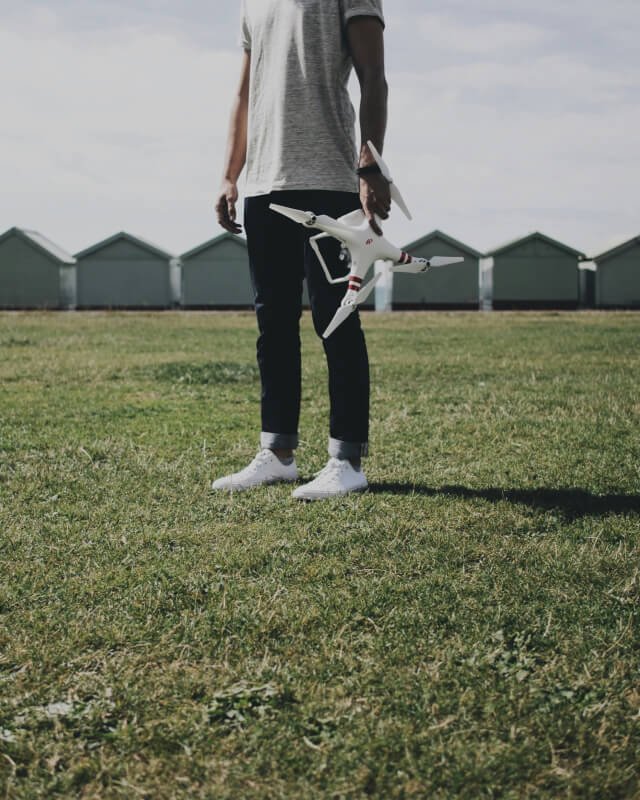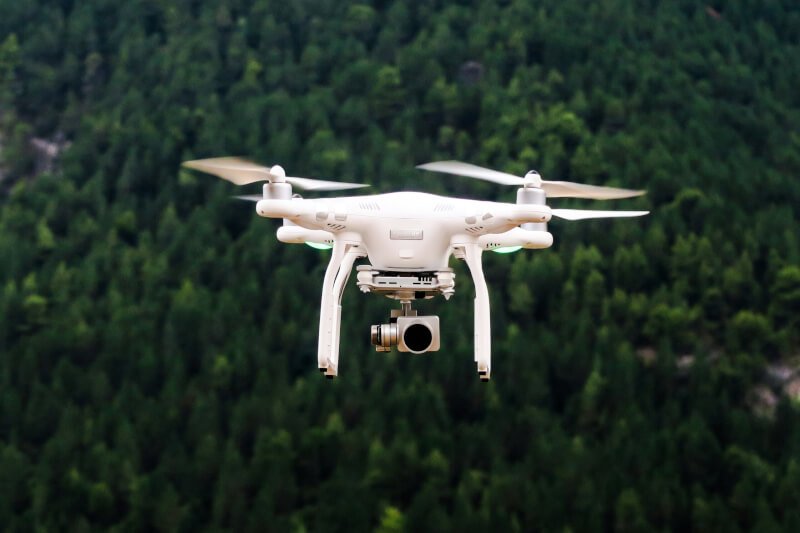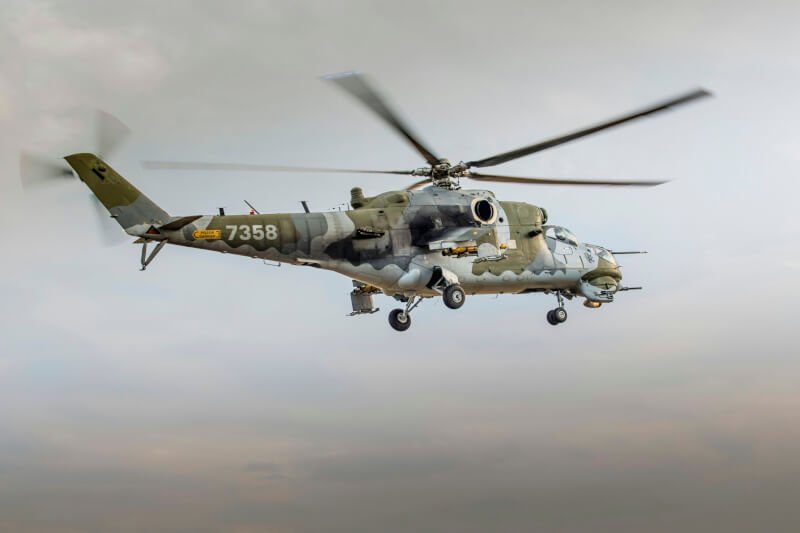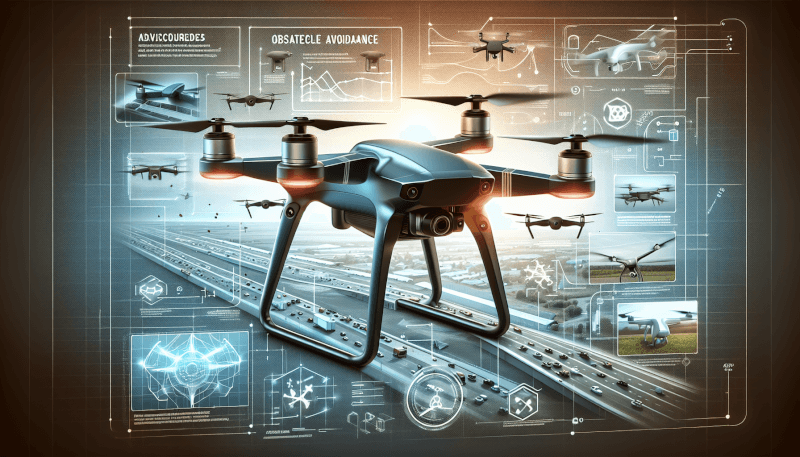If you’ve ever dreamt of taking to the skies as a pilot, capturing breathtaking aerial shots, or just exploring the world from a whole new perspective, then drones are the perfect tool for you. However, with so many options out there, it can be overwhelming to find the right one. That’s where our buyer’s guide comes in. In this article, we will walk you through everything you need to know about drones equipped with obstacle avoidance technology, helping you make an informed decision and soar to new heights with confidence.

What is Obstacle Avoidance Technology?
Definition of Obstacle Avoidance Technology
Obstacle avoidance technology refers to the capability of a drone to autonomously detect and navigate around obstacles in its flight path. This technology uses a combination of sensors, algorithms, and intelligent software to ensure the drone can detect and avoid potential collisions with objects or structures.
How Obstacle Avoidance Technology Works
Drones equipped with obstacle avoidance technology utilize various sensors, such as vision sensors, ultrasonic sensors, infrared sensors, and even lidar technology, to gather data about their surroundings. These sensors constantly scan the environment and collect information about nearby objects or obstacles.
The collected data is then processed by the drone’s onboard computer using sophisticated algorithms. These algorithms analyze the sensor data in real-time and determine the best course of action to avoid the detected obstacles. The drone can adjust its flight path, speed, or altitude to navigate around the obstacles and ensure a safe flight.
Benefits of Obstacle Avoidance Technology
The incorporation of obstacle avoidance technology in drones provides a range of benefits for both recreational and professional drone users. These benefits include:
Increased safety: Obstacle avoidance technology minimizes the risk of collisions, preventing damage to the drone and potential harm to people or property in the vicinity.
Enhanced flight experience: With obstacle avoidance technology, drone pilots can focus more on capturing stunning aerial footage or performing complex maneuvers, rather than constantly worrying about potential obstacles.
Smoother flight operations: Drones equipped with obstacle avoidance technology can navigate their surroundings more effectively, ensuring a smoother flight experience and reducing the likelihood of crashes or accidents.
Improved aerial photography and videography: Obstacle avoidance technology allows drone pilots to capture breathtaking shots from unique angles without the fear of collisions, resulting in high-quality aerial photography and videography.
Versatility and usability: Obstacle avoidance technology makes drones more accessible to users of all experience levels. Beginners can fly with less fear of accidents, while professionals can confidently operate their drones in complex environments.
Factors to Consider When Buying a Drone with Obstacle Avoidance Technology
Flight Range
When purchasing a drone with obstacle avoidance technology, consider the flight range it offers. Flight range refers to the maximum distance the drone can travel from the controller or pilot while maintaining a stable connection. A drone with a longer flight range allows you to explore a wider area and capture shots from greater distances.
Flight Time
The flight time of a drone refers to how long it can fly on a single battery charge. Longer flight times are desirable, as they provide more time for aerial exploration, photography, and videography. Consider drones with obstacle avoidance technology that offer longer flight times to maximize your flying experience.
Obstacle Detection Range
The obstacle detection range is a crucial factor in determining how effectively the drone can detect and avoid obstacles. Look for drones with obstacle avoidance technology that have a significant obstacle detection range, allowing them to identify obstacles from a distance and take appropriate evasive actions.
Obstacle Detection Sensors
Different drones utilize various sensors for obstacle detection. Vision sensors, ultrasonic sensors, infrared sensors, lidar technology, and even GPS navigation systems can be used to detect obstacles effectively. Research the sensors used by different drones and choose one that suits your needs and the environment in which you plan to fly.
Obstacle Avoidance Maneuvers
Consider the drone’s ability to perform obstacle avoidance maneuvers. Some drones can make quick and agile movements to avoid obstacles, while others may have more limited maneuverability. Assess your intended use and flying style to determine which drone offers the right obstacle avoidance maneuvers for your needs.
Camera Quality
If you’re interested in aerial photography or videography, the drone’s camera quality is an essential consideration. Look for drones with high-resolution cameras, adjustable settings, and stabilization features to ensure you can capture stunning and stable footage.
Price
The price is a crucial factor when buying a drone with obstacle avoidance technology. Determine your budget and identify drones that offer the required features within your price range. Remember to consider the overall value and quality of the drone, rather than solely focusing on the price tag.
Drone Size
Consider the size and portability of the drone, especially if you plan to travel with it frequently. Smaller drones are generally more portable, making them easier to transport and maneuver in tight spaces. However, larger drones may offer better stability and payload capacity for professional applications.
Controller Features
Evaluate the features and functionality of the drone controller. A user-friendly and intuitive controller can greatly enhance your flying experience and make it easier to control the drone’s movements. Look for controllers with built-in screens, customizable buttons, and ergonomic designs.
Additional Features
Consider any additional features or functionalities offered by the drone. This may include GPS navigation, intelligent flight modes, automatic return-to-home functions, or even compatibility with virtual reality (VR) headsets. These additional features can significantly enhance the overall flying experience and expand your creative possibilities.
Different Types of Obstacle Avoidance Technologies
Vision Sensors
Vision sensors use cameras placed on the drone to capture visual data of the surroundings. The captured images are then analyzed and processed by the drone’s onboard computer to detect potential obstacles. Vision sensors are effective in detecting and avoiding objects in both indoor and outdoor environments.
Ultrasonic Sensors
Ultrasonic sensors emit high-frequency sound waves that bounce off objects in the drone’s vicinity. By measuring the time it takes for the sound waves to return, the drone can calculate the distance to the objects and determine if any obstacles are present. Ultrasonic sensors are useful for close-range obstacle detection.
Infrared Sensors
Infrared sensors operate by emitting infrared light and measuring the reflections or heat signatures from objects in the drone’s surroundings. These sensors are particularly effective in low-light or nighttime conditions, where other sensors may struggle. Infrared sensors can detect obstacles and navigate around them accordingly.
Lidar Technology
Lidar (Light Detection and Ranging) technology utilizes laser sensors to create a detailed 3D map of the drone’s surroundings. By measuring the time it takes for laser beams to reach objects and bounce back, the drone can accurately detect and avoid obstacles. Lidar technology provides precise obstacle detection capabilities, especially in complex environments.
GPS Navigation
GPS navigation systems enable drones to navigate accurately and maintain their position using satellite signals. While not primarily designed for obstacle avoidance, GPS technology can assist drones in avoiding potential collisions by providing precise positioning information. Combined with other sensors, GPS navigation can enhance obstacle avoidance capabilities.
Multi-Sensor Systems
Some drones incorporate multiple types of sensors to optimize obstacle detection and avoidance. By using a combination of vision sensors, ultrasonic sensors, infrared sensors, or lidar technology, multi-sensor systems offer comprehensive coverage and increase the accuracy of obstacle detection. These systems provide enhanced safety and reliability.
Pros and Cons of Drones with Obstacle Avoidance Technology
Advantages of Drones with Obstacle Avoidance Technology
- Increased safety for both the drone and surrounding individuals or objects.
- Improved flight experience, allowing users to focus on capturing stunning footage.
- Smoother flight operations, reducing the likelihood of crashes or accidents.
- Enhanced aerial photography and videography capabilities.
- Greater usability and accessibility for users of all experience levels.
Disadvantages of Drones with Obstacle Avoidance Technology
- Additional cost compared to drones without obstacle avoidance technology.
- Obstacle avoidance may not be foolproof and may occasionally result in false detections or missed obstacles.
- Some drones may experience limitations in low-light or complex environments.
- Increased reliance on sensors and algorithms, which may require regular maintenance or software updates.

Popular Drone Models with Obstacle Avoidance Technology
Model 1
- Description
- Key Features
- Price Range
Model 2
- Description
- Key Features
- Price Range
Model 3
- Description
- Key Features
- Price Range
Model 4
- Description
- Key Features
- Price Range
Model 5
- Description
- Key Features
- Price Range
Price Range for Drones with Obstacle Avoidance Technology
Entry-level
- Average price range
- Key features
- Examples of drones in this price range
Mid-range
- Average price range
- Key features
- Examples of drones in this price range
High-end
- Average price range
- Key features
- Examples of drones in this price range

Recommended Brands for Drones with Obstacle Avoidance Technology
Brand 1
- Description of the brand and its reputation in the industry
- Notable drones with obstacle avoidance technology from the brand
Brand 2
- Description of the brand and its reputation in the industry
- Notable drones with obstacle avoidance technology from the brand
Brand 3
- Description of the brand and its reputation in the industry
- Notable drones with obstacle avoidance technology from the brand
Brand 4
- Description of the brand and its reputation in the industry
- Notable drones with obstacle avoidance technology from the brand
Brand 5
- Description of the brand and its reputation in the industry
- Notable drones with obstacle avoidance technology from the brand
FAQs
What is the maximum obstacle detection range?
The maximum obstacle detection range varies depending on the drone model and its specific obstacle avoidance technology. Some drones can detect obstacles from a few meters away, while others have a detection range of tens of meters or more. It is essential to consult the drone’s specifications or product information to determine its obstacle detection capabilities.
Can obstacle avoidance technology prevent all collisions?
While obstacle avoidance technology significantly reduces the risk of collisions, it is not infallible and cannot guarantee to prevent all collisions. Factors such as environmental conditions, speed, and unexpected obstacles can affect the performance of the obstacle avoidance system. Drone pilots should always exercise caution and remain vigilant during flight, even when using drones with obstacle avoidance technology.
What happens if the obstacle avoidance system fails?
In the event of an obstacle avoidance system failure, the drone may lose its ability to detect obstacles or execute planned avoidance maneuvers. This can pose a higher risk of collision or accidents during flight. It is crucial to consult the manufacturer’s instructions or seek professional assistance to resolve any obstacle avoidance system failures promptly.

Conclusion
Drones equipped with obstacle avoidance technology offer exciting opportunities for drone enthusiasts and professionals alike. The ability to detect and navigate around obstacles autonomously enhances safety, improves flight experiences, and expands the creative possibilities of aerial photography and videography. When purchasing a drone with obstacle avoidance technology, consider factors such as flight range, obstacle detection sensors, camera quality, and price. With numerous drone models available, research popular brands and explore their offerings to find the perfect drone that suits your needs and budget. Remember to fly responsibly and adhere to local regulations to ensure a safe and enjoyable drone experience.


